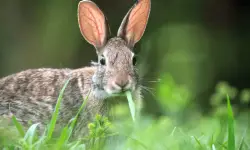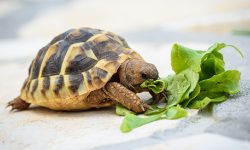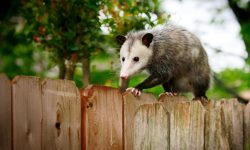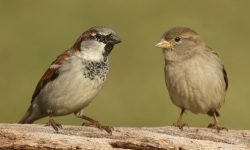Deer are among the most graceful and captivating animals in the wild. Known for their alert eyes, slender legs, and elegant movements, these herbivores are often seen grazing peacefully at dawn or dusk. But beyond their quiet beauty lies a fascinating question that intrigues both wildlife enthusiasts and homeowners alike: What do deer eat?
Deer are opportunistic feeders with diets that change according to the season, location, and available vegetation. From lush forest foliage to backyard gardens, they adapt remarkably well to their environment. Understanding what deer eat not only reveals their ecological importance but also helps landowners manage crops, gardens, and natural habitats more effectively.
In this comprehensive guide, we’ll explore 15 foods that deer love the most, diving into their nutritional value, seasonal preferences, and feeding behavior. By the end, you’ll have a full picture of how these gentle grazers sustain themselves year-round—and why their diets are far more complex than you might think.
Understanding the Deer Diet
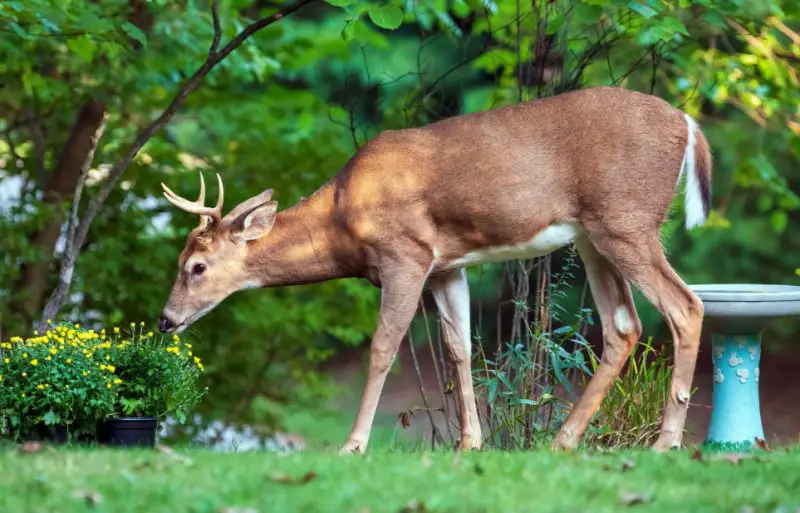
Deer are classified as herbivorous ruminants, which means they feed exclusively on plant material and have a four-chambered stomach that allows them to digest fibrous foods efficiently. Their diet is built around what’s available in nature—leaves, grass, fruits, acorns, nuts, and even tender twigs.
However, unlike cattle or sheep, deer are concentrate selectors. This means they prefer young, tender vegetation that’s easy to chew and high in nutrients. They avoid coarse plants, focusing instead on nutrient-rich parts like buds, shoots, and leaves.
Seasonal changes greatly affect what deer eat. In spring and summer, they feast on fresh greens, while autumn brings a bounty of acorns and fruits. During the harsh winter, they switch to woody plants and bark for survival. This adaptability is what allows deer to thrive across forests, grasslands, and even suburban areas.
15 Foods Deer Love the Most
1. Tender Leaves and Shoots
Fresh leaves and tender plant shoots are staples in a deer’s diet, especially in spring when new vegetation emerges. These young leaves are rich in protein, vitamins, and moisture—perfect for replenishing energy after a long winter.
Deer often browse on forest understory plants, shrubs, and even ornamental garden vegetation. Species like maple, birch, and dogwood produce new growth that deer find irresistible.
2. Grasses
In open meadows and fields, deer graze on grasses such as bluegrass, fescue, and ryegrass. Grass provides steady nutrition during spring and summer, though it’s not their top choice when other tender greens are available.
Young, green grass is particularly valuable because it’s easier to digest than mature, fibrous blades. This is why you often see deer grazing in pastures and lawns after rainfall when growth is fresh and soft.
3. Acorns
Acorns are among deer’s favorite foods, particularly in the fall. These nuts from oak trees are energy-dense, loaded with carbohydrates and fats that help deer prepare for winter.
White oak acorns are preferred over red oak acorns because they’re sweeter and less bitter. In forests, deer spend much of autumn searching for fallen acorns, using their acute sense of smell to find them beneath leaves.
4. Fruits and Berries
Deer have a sweet tooth. Apples, pears, persimmons, and berries like blackberries, raspberries, and mulberries are irresistible treats. These fruits provide sugars and vitamins that boost energy and help maintain body condition.
In agricultural regions, deer frequently visit orchards and gardens to feed on ripening fruit. Their foraging can cause frustration for farmers, but it’s a natural part of their feeding behavior, especially before winter.
5. Nuts and Seeds
Besides acorns, deer also enjoy other nuts such as chestnuts, beechnuts, and hickory nuts. These are high-calorie foods that provide the fat reserves needed for cold months.
Seeds from grasses and forbs are also consumed when available. During late summer and autumn, these small but nutrient-packed items make up a growing portion of their diet.
6. Corn
Corn is a high-energy food that deer love, especially when natural forage is scarce. Wild or farmed cornfields often attract large groups of deer in late summer and fall.
However, while corn provides quick energy, it lacks essential nutrients. In managed lands or feeding areas, it should be supplemented with other forage to avoid digestive issues.
7. Clover
Clover is one of the most nutritious plants for deer. It’s rich in protein, calcium, and other minerals that promote muscle growth and antler development. Deer are particularly drawn to red and white clover varieties found in fields and pastures.
Because it grows quickly and stays green even in cooler weather, clover provides a reliable food source throughout much of the year.
8. Alfalfa
Alfalfa is another highly nutritious plant favored by deer. It’s packed with vitamins, protein, and fiber, making it an excellent forage for both wild and farm deer.
During the growing season, alfalfa fields become prime feeding areas, especially for lactating does and growing fawns. However, like corn, it should be balanced with roughage to prevent digestive upset.
9. Mushrooms and Fungi
Few people realize that deer occasionally eat mushrooms and fungi, particularly in damp forest environments. These provide trace minerals, moisture, and protein.
Wild mushrooms are a valuable but unpredictable food source, depending on weather and soil conditions. Deer may seek them out when other vegetation is scarce or less nutritious.
10. Forbs and Wildflowers
Forbs—broad-leaved herbaceous plants like chicory, plantain, and goldenrod—make up a significant portion of a deer’s summer diet. They’re packed with nutrients and are easy to digest.
Deer also nibble on wildflowers, which supply essential vitamins and contribute to a diverse diet. This natural browsing helps maintain plant diversity by preventing any one species from dominating an area.
11. Tree Bark and Twigs
In winter, when snow covers grass and leaves, deer turn to bark, twigs, and buds from trees and shrubs. They browse on species like aspen, willow, and maple to meet their energy needs.
Although bark is low in nutrients, it provides fiber and sustenance when other foods are unavailable. Deer use their strong teeth to strip bark and chew woody stems.
12. Agricultural Crops
Deer often feed on cultivated crops such as soybeans, wheat, and alfalfa. These crops offer dense nutrition that supports rapid weight gain and fat storage before winter.
While beneficial for deer, this habit often leads to conflict with farmers. Deer damage to crops can be significant, prompting many to use deterrents or fencing to protect their fields.
13. Garden Vegetables
In suburban areas, deer frequently raid gardens. They eat beans, peas, lettuce, spinach, and even root vegetables like carrots and beets. Garden plants are tender, flavorful, and packed with nutrients—everything deer crave.
To gardeners, this can be frustrating, but it’s important to remember that deer are simply following their instincts to find the most nutritious food available.
14. Nutsedge and Weeds
Even common weeds can become part of a deer’s diet. Plants like nutsedge, ragweed, and plantain are surprisingly nutritious. These weeds often grow in abundance, providing reliable forage even when preferred foods are limited.
Their availability and soft texture make them a backup source of nutrition in the wild and in human-altered landscapes.
15. Legumes
Leguminous plants, such as clover, alfalfa, and soybeans, are rich in protein and calcium—vital nutrients for deer growth and antler formation. Bucks especially rely on protein-rich forage during antler development season.
By eating legumes, deer maintain strong muscles and reproductive health, which is why food plots designed for deer often include a mix of legume species.
Seasonal Changes in the Deer Diet
Spring: Regrowth and Renewal
As the snow melts and vegetation reappears, deer feed on tender shoots, buds, and grasses. Their diet is rich in protein and water to restore energy lost during winter.
Summer: Abundance and Growth
Summer brings lush greenery, fruits, and crops. Deer graze constantly to build fat reserves and support growing fawns. Clover, alfalfa, and berries dominate their meals.
Autumn: Preparing for Winter
In fall, deer switch to high-energy foods like acorns, nuts, and corn. These carbohydrate-rich options help them accumulate body fat for cold weather survival.
Winter: Survival Mode
Winter is the hardest season for deer. With limited forage, they rely on woody plants, bark, and evergreen twigs. Their metabolism slows to conserve energy until spring returns.
Nutritional Needs of Deer
Deer require a balanced intake of carbohydrates, protein, fiber, and minerals to stay strong and healthy.
- Carbohydrates (from fruits and acorns) provide energy for movement and heat.
- Protein (from clover, alfalfa, and forbs) supports muscle and antler growth.
- Fiber (from hay, bark, and twigs) aids digestion and keeps their rumen healthy.
- Minerals like calcium and phosphorus are vital for bone and antler development.
Access to clean water is also essential. Deer drink from streams, ponds, and puddles regularly to stay hydrated, especially during hot months.
How Deer Forage and Digest
Deer have a specialized digestive system that allows them to process tough plant matter. Their four-chambered stomach includes the rumen, reticulum, omasum, and abomasum. The rumen ferments food with the help of beneficial bacteria, breaking down fibrous material into usable nutrients.
They are also selective feeders—taking only the most tender, nutrient-rich parts of plants. This efficiency helps them maintain energy while minimizing waste, allowing them to survive even in harsh environments.
The Role of Deer in Ecosystems
Deer play a crucial ecological role as both consumers and prey. By feeding on vegetation, they help shape plant communities and maintain forest regeneration. Their browsing patterns create openings for new growth, benefiting a variety of wildlife species.
However, when deer populations grow too large, overbrowsing can occur, reducing plant diversity and harming forest health. Understanding what deer eat is key to managing their populations responsibly while preserving ecological balance.
FAQs About What Deer Eat
What do deer eat the most?
Deer primarily eat leaves, grasses, acorns, and tender shoots. Their preferences change with the seasons depending on availability.
Do deer eat fruit?
Yes, deer love fruits such as apples, pears, and berries. These foods provide natural sugars and vitamins essential for energy.
Do deer eat vegetables?
Absolutely. Deer often feed on garden vegetables like beans, lettuce, and peas—especially in suburban areas.
What do deer eat in winter?
In winter, deer survive on bark, twigs, evergreen leaves, and leftover nuts or acorns. These are tough times when their diet becomes limited.
Can deer eat corn every day?
While deer enjoy corn, it shouldn’t be their main food source. Too much corn can disrupt digestion and cause illness.
What foods attract deer the most?
Clover, acorns, apples, and soybeans are top attractants. Many hunters and photographers use these to lure deer into open areas safely.
Conclusion
Deer are gentle foragers whose diets reflect the changing rhythms of nature. From tender spring leaves to autumn acorns, every meal supports their strength, survival, and grace. Understanding what deer eat helps us appreciate how finely tuned their feeding habits are—and how vital they are to maintaining healthy ecosystems.
Whether you’re a wildlife observer, a gardener trying to protect your plants, or simply someone who admires these majestic animals, knowing their favorite foods gives you a deeper connection to the natural world.
So the next time you see a deer quietly grazing at the edge of a field, remember: it’s not just eating to survive—it’s part of an intricate balance that has sustained wildlife for centuries. By respecting their diet and habitat, we ensure that deer continue to thrive in forests, meadows, and backyards for generations to come.

